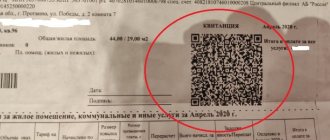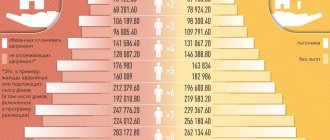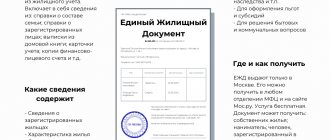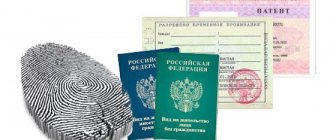Legal regulation
In the housing and communal services sector, legal regulation includes such legal acts as:
- Constitution of the Russian Federation.
- Housing Code.
- Law on Privatization.
- Government decree in the housing and communal services sector.
- Private contracts.
- Regional legal acts.
It is in these legal documents that tariffs for utility services, the procedure for their payment, the procedure for repaying debt obligations, etc. are reflected.
As a rule, regulation most often occurs at the regional level, so special attention should be paid to the regulatory legal acts of the constituent entity of the Russian Federation.
Reflection of ZPU in rent in 2022
What causes this? Where does the wind blow from? The reason for the meeting was a sharp surge in requests from citizens outraged by the proposed changes in the payment scheme for the maintenance of public health facilities. However, these letters, as it turned out, have one peculiarity. For the period from November 1 to December 14 of the year, requests were received on this topic
.
During the same period of the year there were only 9 of them
. What explains the phenomenal increase in the number of requests in the city housing and communal services?
WATCH THE VIDEO ON THE TOPIC: Does the number of people registered affect the rent?
What receipts should come for an apartment?
It should be noted that there is no single form of receipt for housing and communal services that is mandatory for everyone. In different regions, cities, even houses, the management and supply of utility resources occurs differently. Therefore, the payment card may differ in appearance, shape, and color. It may consist of two parts: a notice and a receipt, or it may take the form of a single document.
Officially by Order of the Ministry of Construction No. 924/pr. from the city only an approximate form of rent receipts was approved. However, this document is only advisory in nature, its use is not mandatory.
Due to changes in housing legislation that came into force at the beginning of this year, this sample model has also undergone some additions. But, in general, the structure of the document remains the same.
Next, we will figure out what is included in this document, what is the basis for payment on the receipt.
In fact, any receipt should include the following information:
- about the payer and recipient of payment for housing and communal services (full name, name of organization, TIN, bank details, personal account number);
- information about the residential premises (area of the apartment, the house as a whole, address, number of residents);
- calculation of payments for each type of services provided;
- reference Information.
Requirements for compiling ROM
A ROM is carried out based on topographic survey data, which indicates the location of the boundaries of the land plot and basic data on the objects being designed and existing at the time of drawing up the plan. In addition, the diagram must indicate the following:
- Designed objects
- Existing capital buildings
- Entrances and approaches to objects
- Underground communications
The designed objects are tied to those already existing on the site in compliance with the distances provided for by the requirements of sanitary and fire safety standards. The scheme should not conflict with the general urban planning plan of the site and other regulatory documents.
Based on the provisions defined in Decree of the Government of the Russian Federation No. 87 dated February 16, 2008 (https://base.consultant.ru/cons/cgi/online.cgi?req=doc;base=LAW section 2 as amended on April 13 .2010) The SPOSU must include a set of mandatory elements:
- GPZU number,
- land area,
- calculation of the building percentage,
- building indicators - composition, total area, number of storeys and height,
- characteristics of the site fencing,
- and symbols used in drawing up the diagram (legend).
Contents of ROM for individual housing construction
A land plot plan for individual housing construction consists of graphic and text parts. The text part reflects the following information:
- Description of the site intended for construction and indicators of capital facilities;
- justification of sanitary gaps in relation to the boundaries of the land plot and existing and planned facilities;
- compliance of the site organization plan with existing regulations or replacing them with documents on its use;
- approximate order of improvement.
The graphic part of the ROM is made in any form, without taking into account special drawing requirements, but it must display:
- placement of existing facilities and facilities proposed for construction with passages and entrances;
- areas of public easements, if any;
- location of sanitary gaps and security zones;
- zones of the site and adjacent territory subject to improvement.
When drawing up a plan of a land plot, the following elements are not required to be indicated in the graphic part - storm drains, sections of the building, facade diagrams and entrances to the site. Please note that when providing ROM, there may be additional requirements for it, depending on local situational circumstances. However, no additional requirements may go beyond those defined in Part 5-11, Art. 51 Urban Planning
We do everything according to the law
We do everything according to the law.
In order to collect fees for additional services not specified in Article 154 of the RF Housing Code, the management organization must make appropriate changes to the trust management agreement, which stipulate the name, quantity, tasks or purposes of the service, and its cost. And only when each of the owners signs this agreement, the service is provided.
That is, if you are against the provision of an additional service, you do not sign the contract or amendments to it, and below write the reason for not agreeing. It must be borne in mind that the Housing Code of the Russian Federation directly states that the issue of providing additional services is not within the competence of the general meeting of owners of apartments in apartment buildings, therefore each owner decides this issue for himself: whether he needs the service or not.
Let's go back to the intercom
You also need to understand that if you refuse to sign an agreement for the provision of an additional service, then 2 scenarios will arise:
- Regardless of your refusal, you will be charged for providing a service you do not need. You can safely go to complain - the action of the management organization violates the law.
- You will not be charged any payment, just like others who refuse, and all costs will be evenly distributed among the other owners of apartments in your building. How you look your neighbors in the eyes is your business.
If you installed an intercom in your apartment, you will have to pay for the maintenance of the intercom in full. Even if you file a complaint against the management company or homeowners association, their management can easily prove that you actually use the service in full. It’s another matter if you refuse to install an intercom into your apartment, then in theory they should sell you the number of magnetic keys you need and forget about you.
But you still have to pay the organization that maintains the intercom once a year, since the intercom, like the antenna on the roof, is a means of notifying citizens about emergency situations. For more detailed information, you can study at your leisure the Decrees of the Government of the Russian Federation No. 307 of the year and No. 491 of the year.
You can save money
If your house is not new, and you are just deciding whether you need an intercom, then we advise you to raise money without the participation of a management company or HOA, hire an installation company and that’s it. You won't have to pay for anything anymore. Let's tell you a little secret: if you don't break it with an ax on purpose, then it's a fairly reliable thing that doesn't require additional maintenance. And register it as the property of all residents of the house.
Everyone else who signed an agreement that contains a line about intercom will have to pay. It’s unclear why, but you agreed with this at one time.
Even if you don’t agree with some payment lines on the receipt, pay it in full so you don’t have to deal with recalculations later. Nobody will return the penalty accrued for late payments to you, even if you win the dispute with the management company or the HOA. Otherwise, while you are resolving the issue, you can wait for the bailiffs to arrive.
In Soviet times, there were no intercoms, and anyone could be in the entrance: marginalized people, drunken groups, suspicious individuals. So an intercom is a good barrier for unwanted guests at your entrance.
With this I say goodbye to you. I hope that the topic touched upon is necessary, so subscribe to new articles on our site and give a link to it to your friends and relatives on social networks.
4.1. ROM classification
ROM is non-volatile memory, the main operating mode of which is read mode. ROM can store control microprograms, standard programs, diagnostic programs and other information that should not be lost when the supply voltage is turned off. A type of ROM is programmable logic matrices (PLM), the study of which is devoted to the corresponding section of the course “Circuit Engineering”, and they will not be considered in this manual. All the variety of types of ROM can be classified according to programming methods, also taking into account manufacturing technology.
1. Mask type ROM ( mask – ROM ).
Information is stored in memory when it is manufactured and cannot be subsequently changed. First, a matrix is manufactured consisting of storage elements, address and bit buses without connections between the storage elements and the bit buses. Then, using a custom-made photomask, connections are made in the required places on the matrix for programming logical units.
The advantages of mask-ROM include high reliability of information storage and low cost for large production volumes.
However, when using masked ROMs, it is necessary to take into account that when changing programs or firmware, you have to order new memory from the factory, which increases its cost in small-scale production. In addition, manufacturing custom ROMs at a factory requires a certain amount of time. Therefore, the release of memory of this type is advisable only in the case of mass production, and when developing and debugging programs, it is more convenient for the user to program the ROM himself.
2.
One - Time Programmable ROM ( OTPROM ).
In the unprogrammed state, each memory cell returns code $FF when read. Those bits that must contain 0 are programmed. After setting the bits of a cell to 0, it is impossible to restore their single value.
Programming technology consists of burning either memory elements or their individual parts, or fusible links by repeatedly applying high voltage pulses to the nodes of the memory matrix.
The disadvantages of OT-PROM include the lower density of the elements, since the storage elements themselves are large in size to dissipate the power allocated during programming. In addition, the ROM circuit must include elements that generate programming currents that are used once. During programming, the memory element or jumper may not be completely destroyed, the connection may be restored over time and the information will be distorted
3. Reprogrammable ROM with ultraviolet erasing -
EPROM ( Erasable Programmable ROM ).
Before each programming session, the entire module is erased using ultraviolet radiation to restore single values. For this purpose, the MK case is made with a special quartz glass window. Next, zeros are entered into the required bits by applying voltage. The number of erasing/programming sessions is 25-100.
4. Electrically erasable reprogrammable ROM -
EEPROM ( Electrically Erasable Programmable ROM ).
Memory cells are erased using electrical signals. Cheaper than EPROM, but more expensive than OTPROM. The maximum number of erase/program cycles is 10,000. The programming technology allows for byte erase and byte programming. To do this, a voltage of 10-20V must be applied to the selected cell. It is also possible to erase a memory block.
The advantage of EEPROM is the ability to erase and program it as part of a device, for example, in a microcontroller, without removing it from the board, which allows debugging and software upgrades.
Rarely used, because Flash ROMs are cheaper and have similar characteristics.
5. Electrically erasable ROM of the Flash –
Flash – ROM
. It differs from EEPROM in the way it erases information. In EEPROM, erasing is performed separately for each cell, but in Flash memory, erasing can only be done in blocks or pages. A page is 8, 16 or 32 bytes. Blocks can combine a certain number of pages up to the entire volume. The cost is not much higher than OTPROM.
Explanation of abbreviations on the receipt
A utility bill includes a lot of abbreviations that need to be deciphered and understood. Each abbreviation is designated by a set of letters and has its own name. Let's look at some of them.
SEON
This is a rather specific column in utility bills. SEON stands for unified public information system. As a rule, this includes sending messages to citizens about impending natural disasters, etc.
SOI
This is one of the most common columns in a payment order. It stands for the phrase “maintenance of common property.” It obliges citizens to pay mandatory expenses for the needs of common property in the house. SOI includes:
- maintenance of stairs;
- entrances;
- elevators;
- attic, etc.
The amount of payment for SOI is determined by an agreement between residents and the management company.
ROM
This payment applies only to those houses where an intercom is installed. The abbreviation stands for: “ intercom-locking device ”. In some cases, the fee for ROM is issued as a separate receipt.
Citizens are required to pay for its maintenance and maintenance of normal technical condition.
ONE
General house needs are an analogue of SOI . These are also expenses for the maintenance of common property. There are no differences in these abbreviations; it all depends on what set of letters the management organization uses to indicate these expenses in the payment slip.
UUTE
UUTE in the receipt is responsible for the provision of thermal energy to apartments. It reflects how many resources were supplied and at what tariffs the payment is calculated. The inclusion of UTE occurs depending on the season. Explanation of the abbreviation: thermal energy metering units.
DSCPT
Stands for “additional cable program television systems.” This column is not available on payment cards in all regions. It constitutes a fee for the provision of telecommunication services, maintenance of a common house antenna, etc.
DSKPT can be appealed by a citizen in a situation where he uses cable TV and an antenna.
POVK
In order to understand what POVK means, you need to refer to the norms of housing legislation. This is an additional fee for providing heat to the apartment. A couple more letters are added to this abbreviation, for example, ТХВ.
APPP
APPP involves citizens paying for the development and maintenance of systems that protect the house from sudden fire. Such systems do not protect the apartment itself, but entrances, stairs, attics, etc.
AUR
AUR is also a specific line of expenses in payments. This includes a set of payments aimed at ensuring the work of the administrative and management apparatus, for example, a management company.
OPU
OPU includes the volume and types of costs for the collection, repair and installation of various metering devices, such as water or gas meters.
ELDT
This is the “daily consumption on the electric meter”. As a rule, such consumption is not indicated in all regions. The night consumption of the EBDT can also be indicated in a separate line.
TPP
TPP includes payment for water - “coolant”.
VDGO
The interpretation of this concept includes the provision and maintenance of gas equipment. VDGO includes stoves, gas boilers, and water heaters. Citizens are required to pay for inspection, repair and maintenance of these devices.
PD number
This is the payment document number! It is used by housing and communal services management companies, and it is also convenient for the tax inspectorate and other organizations.
Water disposal in housing and communal services receipt
Citizens are also required to pay for wastewater disposal. Payment for this is charged every month. The management company issues such a receipt and also issues an invoice for the allocation.
Water supply
DHW and cold water are indicated in a separate column. This is, in essence, the supply of hot and cold water to the apartment. This is done through common pipes.
DHW
DHW refers to the provision of hot water supply. The column must be filled out in accordance with legal requirements. There is no charge for the consumption of hot water in situations where there is a hot water heater at home.
HVS
This is the supply of cold water to the apartment. Payments are collected based on common metering devices (shared in the building) or on individual ones located in the apartment. The calculation is generated for a certain period.
Heating
Abbreviations for heating have already been discussed above. It should be noted that the provision of this service is seasonal and, for example, in the summer, no payment for heat is charged.
Locking and sealing devices
Locking and sealing devices (ZPU) are designed to lock and seal railway freight cars and containers that are subject to sealing in accordance with the Rules for the carriage of goods by rail, as well as to control and prevent unauthorized access to the transported cargo.
In accordance with Article 28 of the Charter, loaded wagons and containers must be sealed with a ZPU.
Transportation of goods in direct international railway traffic in wagons and containers without a locking device is not permitted.
The design of the ZPU, along with elements that implement sealing functions, includes power links that provide blocking (closing) of locking units of railway freight cars and containers (doors, hatches, steering wheels, covers, etc.) and containment (mechanical protection of cargo) in established limits from criminal access.
Regular opening of the locking system is ensured by special devices (nippers, cable cutters, etc.) designed for this purpose, ensuring the safety and serviceability of the locking devices of cars and containers.
Using the ZPU allows you to:
- confirm the fact of access to a sealed carriage (container) or lack thereof;
- ensure cargo protection from unauthorized access;
- divide the measure of legal and financial responsibility for the safety of cargo during its transportation between participants in the transportation process;
- provide law enforcement agencies with additional information to investigate thefts and make appropriate decisions.
The procedure for accounting and circulation of locking and sealing devices with individual control marks applied to them:
- Work on organizing the accounting and turnover of ZPU in JSC Russian Railways is entrusted to the Center for Corporate Transport Services (hereinafter - CFTS) and the Central Directorate for Management of the Terminal and Warehouse Complex (hereinafter - CM)
- Automated accounting and control of the turnover of ZPU is carried out in the subsystem for monitoring the turnover of locking and sealing devices of the automated system for operational control and analysis of the quality of commercial work and the safety of freight transportation (hereinafter referred to as ASKM ZPU).
- Incoming quality control, registration/re-registration of ZPU intended for sealing cars and containers is carried out in the regional departments of accounting and control of turnover of ZPU CM (hereinafter referred to as ROK CM).
- Registration/re-registration of landfills, as well as incoming quality control, is carried out by employees of the Central Management Committee at the request of the owner of the landfill. ZPU that have previously passed the entrance control are not presented to the ROK CM for registration/re-registration. The fact of registration of the ZPU is confirmed by the Register formed in the ASCM ZPU. The register contains information about the type of ZPU, individual number, name of the shipper (sender) and stations from which sealed wagons and containers will be sent. Re-registration of the ZPU is carried out by making changes to the registration information about the ZPU by an employee of the ROK CM (at the request of the owner of the ZPU) in the ASKM ZPU The register is issued to each consignor (sender) upon registration/re-registration.
- In accordance with the General requirements for mechanical locking and sealing devices used for sealing freight cars and containers on the railway transport of the Russian Federation (approved by the Ministry of Railways of Russia on June 25, 2003, the use for sealing cars and containers of ZPU, not registered in ASKM ZPU, as well as with expired service life (permissible storage) or listed as lost are not allowed.
- Article 28 of the Charter of Railway Transport of the Russian Federation dated January 10, 2003 No. 18-FZ
- Rules for sealing cars and containers in railway transport, approved by order of the Ministry of Railways of Russia dated June 17, 2003 No. 24
- General requirements for mechanical locking and sealing devices used for sealing freight cars and containers in railway transport were approved by order of the Ministry of Railways of Russia dated June 25, 2003 (26.7 kb)
- The list of types of locking and sealing devices used for sealing cars and containers during the transportation of goods carried out by JSC Russian Railways and the Procedure for establishing the types of locking and sealing devices used for sealing cars and containers during the transportation of goods carried out by JSC Russian Railways was approved by the order of JSC Russian Railways "Russian Railways" dated December 25, 2007 No. 2423r (243 kb)
- The rules for numbering locking and sealing devices used for sealing cars and containers during the transportation of goods carried out by JSC Russian Railways were approved by the order of JSC Russian Railways dated 05/03/2007 No. 785r (20 kb)
- Application for passing entrance control and registration of a locking and sealing device (15.6 kb)
- The procedure for disposal of locking and sealing devices approved for use for sealing cars and containers during transportation by rail on the infrastructure of JSC Russian Railways (71 kb)
What does a utility bill look like?
A housing and utility bill looks like this: it is a written document that lists the services for which a fee is charged. Tariffs are also indicated there.
The rent act has the following content:
- Indication of the payer.
- Address and location of residential premises.
- The name of the service provider and its bank details.
- QR code.
- Data on the services provided.
- Tariffs that are applied during calculation.
- Total amount to be paid.
Depending on the management company, the receipt may also include services for garbage removal, sewerage, general house needs, heating, etc.
FAQ
| On what grounds can a contract be terminated? | This question interests many citizens living in residential premises. The agreement is terminated based on the desire of the owner himself, without the possibility of further use of the means of communication included in the design of the lease . This is also possible due to improper fulfillment of obligations on the part of the management organization. |
| How does the cost of device maintenance appear on the utility bill? | All organizations involved in the installation of intercoms must include the service fee in a single receipt, separate from other services. For this purpose, agreements are concluded with housing companies, according to which an account is formed. |
| How to get out of problematic situations? | If problems arise or there is a banal reluctance to use intercoms, the situation can be resolved pre-trial at a meeting of owners. If authorized organizations refuse to disconnect from the relevant service, then you need to draw up a statement of claim and submit it to the office of the competent court, after which this utility service will be disconnected. |
What are we paying for?
What do we pay for
? Article 154 of the Housing Code of the Russian Federation states that rent means payment for maintenance and repair of the common property of apartment buildings and utilities. The list of services and maintenance work in accordance with technical regulations and standards for roofs, attics, basements, utilities, load-bearing walls, technical premises, entrances and local areas is approved by the municipal authorities in each region, as are tariffs for all types of work. Only the general meeting of apartment owners and no one else has the right to expand their list.
We'll complain
Utilities include the supply of resources to ensure comfortable living for residents: water, heat, electricity, gas, sewerage and solid waste removal. If you are forced to pay for services that are not provided to you, or to pay for them at inflated rates, you have the right to file a complaint with the housing inspectorate, the prosecutor's office, or go to court.
It is best to start from the first instance by complaining to your management organization, and only if you do not receive an answer, or an answer that does not suit you, can you continue to complain through the authorities.
More services
Many people probably have to pay for so-called additional services. They are varied and there is no limit to the imagination of management organizations: contributions for insurance of common property, payment for a security post or concierge, maintenance of a barrier, intercom, video cameras, and so on. Some pay in silence, others are indignant - and pay again.
It is especially offensive to those residents who do not need these additional services, but have to pay for them. You don’t have a car and minor children - and you don’t need yard security with video cameras and a barrier, you live alone and don’t have guests - it’s as if you don’t need an intercom.
Reflection of the ZPU in the rent
We offer to calculate the rent step by step using the example of a receipt from one of our employees; he lives alone in a two-room apartment. To do this, we will need tariffs that have been in effect in Ufa since July: Thermal energy, rub. However, it is you who set the maintenance tariff at a general meeting of homeowners
.
Therefore, in order not to wonder later where the numbers come from, try to be at all community meetings
.
And also the salaries of employees, for example, the same cleaners and janitors and much more
.
The house manager must ensure that the residents' money goes to its intended purpose. If there is indescribable dirt in the entrances and in the yard, not a single light bulb is on, and you regularly pay for the maintenance of the house, then this is a reason for a complaint
.
First, contact the management organization; if they don’t respond, contact the housing inspectorate or the prosecutor’s office. In our case, the maintenance fee is 14.26 rubles
.
We multiply this figure by the total area of the apartment 41.9 m2; the amount of your contribution to the common boiler depends on it and we get a total for maintenance - .49 rubles
.
What is ROM? Scheme, sections and volume of ROM
In cases where recording is carried out using a metallization process and a mask is used, such a read-only memory device is called masked. The addresses of the memory cells in them are supplied to 10 pins, and a specific chip is selected using a special CS signal. Programming of this type of ROM is carried out in factories, as a result of which production in small and medium volumes is unprofitable and rather inconvenient. But when produced in large quantities, they are the cheapest among all permanent storage devices, which has ensured their popularity.
This electronics object is depicted as a device that in appearance resembles the connection of a certain number of single-digit cells. The ROM chip, despite its potential complexity and seemingly significant capabilities, is small in size. When storing a certain bit, it is sealed to the case (when a zero is written) or to the power source (when a unit is written). To increase the capacity of memory cells in permanent storage devices, microcircuits can be connected in parallel. This is what manufacturers do to get a modern product, because a high-performance ROM chip allows them to be competitive in the market.
Historical types of ROM
Mechanical anti-theft devices for cars
With the development of electronic technology and computers, the need for high-speed ROMs arose. In the era of vacuum electronics, ROMs were used based on potentialoscopes, monoscopes, and beam lamps. In computers based on transistors, plug matrices were widely used as small-capacity ROMs. If it was necessary to store large amounts of data (for first-generation computers - several tens of kilobytes), ROMs based on ferrite rings were used (they should not be confused with similar types of RAM). It is from these types of ROM that the term “firmware” originates - the logical state of the cell was set by the direction of winding the wire surrounding the ring. Since a thin wire had to be pulled through a chain of ferrite rings, metal needles similar to sewing needles were used to perform this operation. And the operation of filling the ROM with information itself was reminiscent of the sewing process.
Housing and communal services and housing and communal services - what are they and what is the difference
Before you understand the difference between these concepts, you need to understand the meaning of this abbreviation.
Housing and communal services is understood as housing and communal services as a branch of the economy engaged in the study and formation of a range of services necessary for the normal life support of the population.
Housing and communal services are housing and communal services, that is, a specific resource provided to citizens - electricity, hot water, etc.
The concept of housing and communal services is much broader than the concept of housing and communal services, and includes, in addition to the list of services, other essential provisions, legal norms, standards, etc.
Reflection of the ZPU in the rent
The payment documentation of residents of the Russian Federation may include the cost of locking equipment. This is relevant only for those cases when the service company enters into a special written agreement with a citizen, drawn up on the basis of Article 307 of the current Civil Code of the Russian Federation.
Article 307. Concept of obligation
Locking and intercom devices are not included in the list of separately paid utilities due to the fact that payment for housing and communal services includes only the supply of cold or hot water, electricity and gas supply, as well as heating.
To understand that this is the ZPU in the rent, it is necessary to familiarize yourself with the peculiarities of the terminology, with references to
current federal legislation with accounting nuances, opportunities to minimize expenses, as well as the most frequently asked questions by representatives of the population.
What do the items on receipts mean and how is it calculated?
Most of the data on the receipt is presented in table form. Each line indicates a separate type of service, including its name, tariff, standard, volume consumed, payment amount. Next, let's look at how each of them is deciphered.
ONE
An abbreviation such as ODN is often found on receipts. Let's take a closer look at this ODN, which is how it is designated in housing and communal services. This abbreviation stands for very simply: general house needs.
Living in an apartment building, the homeowner uses not only his premises, but also the property common to the entire house. Moreover, he owns a share in this property and is obliged to bear the costs of its maintenance.
Let's look at how this is calculated for each tenant. Everything is very simple, the payment amount is calculated based on the area of the premises occupied by a particular person.
What is included in the ODN according to current legislation? In fact, we are talking about the costs of maintaining the common property of the house. And it includes cleaning of entrances, their lighting and heating, elevator maintenance and other measures to maintain its normal condition.
Read if you want to know more: how heating fees are calculated with or without a meter in an apartment building.
In 2018 (the rule was introduced in 2017), the receipts include payments for maintenance at the ODN, including:
- hot water ONE;
- cold water ODN;
- water disposal unit;
- electricity supply is one.
The one-time tax for hot water includes the costs of washing entrances, flushing intra-house networks, watering plantings near the house, and water losses inside the house. General household needs for hot water include the use of water for pressure testing of heating systems and repair of radiators.
Also read: What is drainage on a receipt?
APPP
The incomprehensible abbreviation APPZ hides the maintenance of automated fire protection. If such a system is installed in the house, and the contract with the management company specifies its maintenance, then the owners must bear such costs.
ROM and TO SOV D
ROM stands for intercom and locking device installed on the door in the entrances, in other words, intercom. Many receipts include a maintenance fee. This position can also be abbreviated as “TO SOV D”, which means maintenance of entrance security equipment (intercom). These are not obvious decodings.
AUR
AUR is the administrative and management costs spent by the organization managing the house. In fact, their accrual is provided for in Art. 154 Housing Code of the Russian Federation.
DSCPT
DSCPT refers to additional cable program television systems. In fact, we are talking about antennas that provide the ability to watch a large number of channels. Therefore, everyone does not need to pay for this service.
VDGO
VDGO, the decoding of this abbreviation in housing and communal services is as follows: in-house gas equipment. Therefore, if there is gas in the house, then you need to pay a fee for servicing this equipment.
It should be noted that in-house gas equipment includes equipment in the house itself and apartments: risers, locking devices.
Payment of other payments and their decryption
In addition to the contents, the receipts provide for the payment of other payments: cold water, hot water, sewerage, collection and disposal of household goods. waste, TV antenna. Let's look at how to understand these meanings. Cold water supply is cold water supply. DHW hot water.
Each consumer had to install a water and electricity meter in his apartment. Payment is calculated and made according to their testimony.
See also: how to recalculate water bills using meters.
However. if there is no accounting for three months, then the calculation will be made according to established standards.
Explanation of types of expenses
7. APPP – maintenance of automated fire protection. The APPZ system consists of fire pumps and electric valves at the inlet of the fire water supply system, a smoke removal system including automatic valves installed on each floor and fans on the technical floor, ensuring the removal of smoke through these valves from the floors during a fire, an automation system that drives all components systems into operation, as well as providing a fire alarm, and automatic lowering of elevators, fixing them on the ground floor and opening the doors in the event of a fire;
The second is carrying out planned and preventative repairs of everything that is inspected. This includes work on preparing a residential building for operation during the heating season and preserving the heating system for the summer. Maintenance costs include the cost of materials used and emergency maintenance of homes.
A precedent has been created in the intercom case
The court ruled that ROM owners should decide for themselves who to pay for their maintenance
A legal precedent has been created in St. Petersburg. The Kalininsky District Court satisfied the claims of the residents of one of the front houses No. 36 on Fedoseenko Street. They were outraged that local Housing Services No. 3 began charging them for the maintenance and repair of the intercom, or intercom, despite the fact that residents had been paying for this to another organization for several years. As it turned out during the legal battle, similar processes are now taking place throughout the city - management companies are trying to switch the maintenance of intercoms to themselves, often against the will of apartment owners. And in fact, the precedent that happened will help many to defend their rights. This story began in 2006. Residents of the second front door of the above-mentioned house contacted a company installing intercoms, raised money, bought all the equipment, paid for installation and entered into an agreement with a specific company for servicing the ROM. And everything was fine until in June of this year they saw that in their receipts for utility bills, opposite the empty line “maintenance and repair of ROM”, an amount of several tens of rubles appeared. Moreover, these amounts were different in different receipts. They started to find out, and it turned out that housing utility company No. 3 entered into a contract agreement with some company for the maintenance and repair of intercoms and arbitrarily began to charge residents money for these services. Moreover, economists turned out to be inconsistent. Residents of this entrance were charged 49 kopecks per square meter of apartment area, and residents of the neighboring entrance were charged 40 rubles per apartment. The housing society did not inform the apartment owners about its decision and did not enter into any agreements with them. The residents tried to explain to the utility workers that they already had contracts with another company, which completely satisfied them, and that they were not going to entrust the maintenance of their property (the intercoms, communication system and locking device they bought with their own money) to an unknown company. But they were told that intercoms are the common property of the house, for which housing and communal services are directly responsible. The apartment owners contacted the St. Petersburg Housing Committee. And there they were supported: “the ROM system does not belong to the common property of an apartment building and is the private property of the persons who paid for its installation.” But the housing society functionaries were not convinced by this either. Then the apartment owners filed a lawsuit. And yesterday, the Kalininsky District Court satisfied their demands - not to charge fees under the line “maintenance and repair of the apartment building”, and also to recalculate the rent. Mikhail TELEKHOV
Telekhov Mikhail
Important: Rules for reposting materials
Are payments being calculated to us correctly?
1.3. Additional services. Although the law does not provide for a third component of the rent, in practice, the rent receipt includes various additional services: insurance of the general property of the house, concierge services, security. Additional services, both before the entry into force of the Housing Code of the Russian Federation, and now, can be determined by agreement with the owners. It is the contract that must regulate the name, volume, composition and cost of additional services. According to paragraph 3 of Article 16 of the Federal Law “On the Protection of Consumer Rights” dated 02/07/1992 No. 2300-1: “The seller (executor) does not have the right to perform additional work or services for a fee without the consent of the consumer. The consumer has the right to refuse to pay for such work (services), and if they are paid, the consumer has the right to demand that the seller (performer) return the amount paid.” This fully applies to additional services in relations between the HOA and the owners of premises, including apartments. The Housing Committee of St. Petersburg pointed out the illegality of approving the amount of additional services by the general meeting of owners or the general meeting of the HOA. The instructional letter dated June 3, 2005 N 2-1612/05 “On the procedure for holding a general meeting of owners of premises in an apartment building to choose a method of managing this building” states: “...Making decisions on issues related to the provision of additional services to owners of premises in apartment building and establishing the amount of payments of owners for these services (services not classified by the Rules and Standards for the Technical Operation of the Housing Stock, approved by Resolution of the State Construction Committee of Russia dated September 27, 2003 N 170, as work and services for the maintenance and repair of the housing stock), such, for example, such as the services of a concierge, security guard, installation and maintenance of intercoms, video cameras, etc., are not included in the RF Housing Code within the competence of the general meeting of premises owners (general meeting of HOA members), therefore these issues cannot be raised for consideration by the general meeting. Organizations providing these services can only inform the owners of premises at a general meeting about the possibility of providing services and their price. The provision of these services to consumers by performers is carried out in accordance with the Law of the Russian Federation “On the Protection of Consumer Rights” dated 02/07/1992 N 2300-1. The decision on the need for this service and the amount of payment for it is made by each owner independently and is formalized by signing an agreement between the owner of the premises and the service provider.”
- ROM
- masked ROM, manufactured by the factory method. There is no possibility to change the recorded data in the future. - PROM
is a ROM that is flashed once by the user. - EPROM
- reprogrammable ROM (PROM). - EEPROM
is an electrically erasable programmable ROM.
This type of memory can be erased and refilled with data several tens of thousands of times. Used in solid state drives. One type of EEPROM is flash memory
.
Flash memory
- a type of solid-state semiconductor non-volatile rewritable memory.
Who generates receipts for housing and communal services payments?
There are several aspects to consider when answering this question. Thus, according to the law, in an apartment building, receipts for payment of utility services are sent and generated by management organizations. They are authorized to calculate the consumption of the following housing and communal services:
- for water supply;
- per apartment (depending on the number of persons registered there);
- for major repairs, etc.
Citizens receive separate receipts for gas and electricity supplies. This is due to the fact that these organizations are direct suppliers of utility services, and therefore charge directly.
Please open the door
Hello, dear friends.
Today we will talk about ROM in housing and communal services - what it is, how maintenance occurs and other issues. ROM stands for intercom and locking device or our usual and familiar intercoms. They are installed on the entrance doors of apartment buildings (Apartment Buildings) and are serviced by a specialized organization, most often the one that installed them. The question arises: is such a service considered a public service and how much should they pay for it, for example, those residents who refused to install an intercom into their apartment. Let's figure it out.
ZPU in the rent what is this Ufa
Communal apartment "KP-Ufa": How to check whether your rent is calculated correctly. We suggest calculating the rent step by step using the example of a receipt. ZPU in the rent what is this Ufa
.
The document is drawn up in the approved form. Therefore, deciphering a receipt for housing and communal services is impossible without
. Starting from the new year, fees for servicing intercom systems will not be included in notification invoices if the organization is in charge.
AA The receipt consists of two parts. The upper part, the notification invoice, contains the total amount of the payment and is intended for reporting by the organization that accepted the payment.









